After Losing Only Child to Typhoon Haiyan, LDS Couple Finds Healing through Church Support and Temple
Contributed By Sarah Jane Weaver, Church News editor
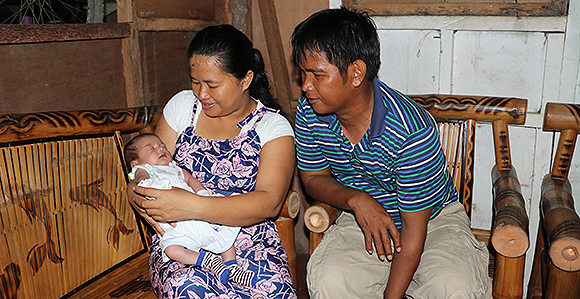
Analyn Esperas holds her infant son, Gemmer, in their home in Tacloban, Philippines, in 2017, while her husband, Gemmer, looks on. The Esperases lost their daughter, Annammer, when Typhoon Haiyan struck the Philippines on November 8, 2013.
Article Highlights
- A Church building program helped victims of Typhoon Haiyan to recover.
- The Esperases, who lost their only child to the typhoon, were sealed in the temple to their daughter.
- The community significantly recovered, and the Esperases welcomed a new baby to their family.
“This trial and many others are part of this mortal experience. … We need to have faith to stand up after the trial and trust in the Lord.” — Elder Ulisses Soares, Presidency of the Seventy
Related Links
TACLOBAN, PHILIPPINES
In the days after a horrific storm hit Tacloban, Philippines, Gemmer Esperas walked along an altered landscape—where houses had been ripped from their foundations and a thick coat of black mud covered the community—and looked for the body of his only child.
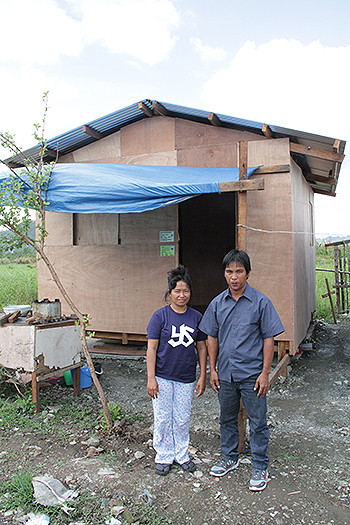
Gemmer Esperas and his wife, Analyn Esperas, pictured in March 2014, lost their only child, 6-year-old Annammer, during Typhoon Haiyan on November 8, 2013. Now, as they begin to rebuild their lives, the Church has provided materials for Brother Esperas to build a new home—seen in background. He is receiving training in carpentry and has received tools from the Church. Photo by Sarah Jane Weaver, Deseret News.
Annammer Esperas, 6, was home with her mother, Analyn Esperas, when Typhoon Haiyan struck her city on November 8, 2013.
As the water came, the mother and daughter were carried into a rice field. Analyn tried in vain to hold the little girl as the waves and the wind beat the earth. Hours later, she would lie on the top of a tin roof knowing her only child had been carried away by the storm surge.
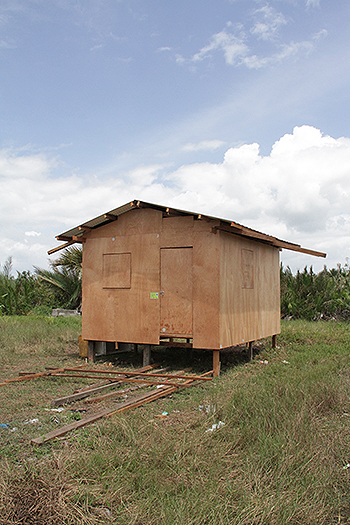
A home under construction by Church members in the Philippines is part of a Church building project in March 2014. Photo by Sarah Jane Weaver, Deseret News.
Gemmer returned from work as a security guard to discover what Haiyan had claimed—his daughter, his home, his job.
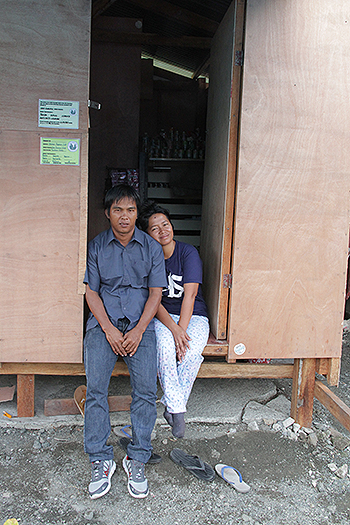
Gemmer Esperas and his wife, Analyn Esperas, lost their only child, 6-year-old Annammer, during Typhoon Haiyan. As they began to rebuild their lives in March 2014, the Church provided materials for Brother Esperas to build a new home. He received training in carpentry and tools from the Church. Photo by Sarah Jane Weaver, Deseret News.
First he found and buried his daughter, then he gathered abandoned sheets of corrugated metal and built a new home. But the gaps in the metal did not protect his wife from the wind or the rain. The couple could not sleep.
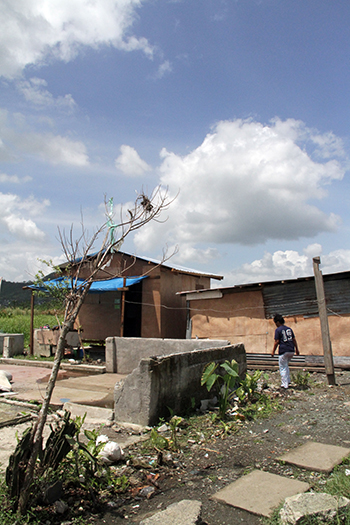
Analyn Esperas walks near her home in Tacloban, Philippines, in March 2014. She was home with her only child, Annammer, 6, when Typhoon Haiyan hit on November 8, 2013. In total, 74 people who lived around the Esperases died in the disaster—including Annammer. Photo by Sarah Jane Weaver, Deseret News.
Everything changed when a counselor in the bishopric of their ward, Joy Operio, found the Esperases. “Go to the church for shelter,” he told them. That night in the LDS meetinghouse they slept for the first time since their daughter’s death. On that night, recovery for the Esperases began.
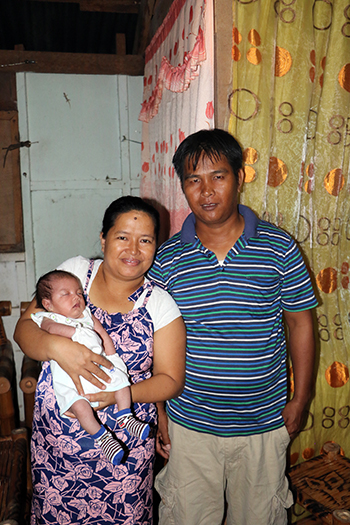
Gemmer and Analyn Esperas hold their infant son, Gemmer, in their home in Tacloban, Philippines, in 2017. Photo by Sarah Jane Weaver, Deseret News.
Moving forward
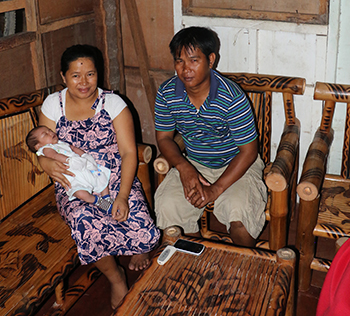
Gemmer and Analyn Esperas hold their infant son, Gemmer, in their home in Tacloban, Philippines, in 2017. Photo by Sarah Jane Weaver, Deseret News.
Looking at Tacloban today, it would be hard for visitors to imagine how Typhoon Haiyan devastated the city just more than four years ago.
Vendors walk the street selling their wares. New homes and commercial development dot the landscape. And the mountain, stripped of vegetation during the storm, is filled with lush, green growth.
The deadliest typhoon on record in the country, Typhoon Haiyan left more than 6,100 people dead, injured 28,000, and displaced 4.1 million. Some 1,785 people remain missing, according to the National Disaster Risk Reduction and Management Council in the Philippines.
The storm also destroyed more than 1.1 million homes in the central Philippines.
Yet in a country where disasters strike often, recovery was anticipated.
“The Philippines is a land of beautiful, God-loving people,” said Elder Shayne M. Bowen, General Authority Seventy and President of the Church’s Philippines Area. “It is also a land of typhoons, earthquakes, floods, and landslides. These natural disasters are a fact of life in the Philippines. It is amazing to see the resilience of the people in the face of these challenges, which never ends. When most people would give up, the Filipinos are always ready to rebuild without complaint.”
After Typhoon Haiyan, the Church immediately set programs in place to provide relief and help members rebuild, restore, and retool, said Tony San Gabriel, Philippines self-reliance manager.
A Church building program, started after the storm, continues to bless the lives of members today, said Ronald Aban, self-reliance manager for the Philippines Tacloban Mission.
As part of the building program, each participant obtained basic skills as a carpenter, received tools, and earned a certificate. A trainee built his or her own house—about 12 feet by 12 feet in dimension—and nine more homes.
“Tacloban Saints still struggle after four years from the strongest typhoon,” said Aban, noting that many are living in the same house that they built with the Church’s humanitarian help. “However, the carpenters that took part in the training and rebuilding four years ago are better today because of the enhanced skills they’ve gained, plus the tool kits that they are still able to use and the certificates they got from the training.”
Recovery
Four years after the storm, Gemmer and Analyn Esperas sit in the home constructed by Gemmer through the Church’s construction program and reflect on the miracles in their lives.
Analyn holds a small infant—baby Gemmer, born nine years after his sister.
In addition to enrolling in the construction program in the months after the storm, Gemmer also accepted a calling as Young Men president in the ward.
When the youth traveled to the Cebu City Philippines Temple for baptisms, he and Analyn made the trip too; they entered the temple for the first time, made covenants, and had their daughter sealed to them.
“I was crying so much,” said Gemmer. “I was able to know that we will be together with Annammer someday.”
For some time, Analyn had been bothered by the question of a well-intentioned neighbor who lost six children in the storm. “What is worse,” the neighbor had asked, “to lose an only child or to lose many children?” The question consumed Analyn with grief.
But in the temple the question no longer mattered. She was filled with light. The pain associated with Typhoon Haiyan was gone.
As she and Gemmer had their daughter sealed to them, she felt Annammer with them. “I cannot explain the happiness,” she said. The temple, she said, “washed away the nightmares of my life.”
Gemmer and Analyn Esperas also found the strength to ask the Lord for one more thing. The couple prayed in the temple that they would be parents again.
Today
Bishop Frederick Cabe of the Palo Ward, Tacloban Philippines Stake, said the storm “won’t be forgotten” in Tacloban. “Every year there is a memorial to commemorate it. They put out candles … to remind people we had this.”
But besides memorials—the most prominent are at the site of a mass grave or the convention center where thousands fled and then died—few signatures of the storm remain. Tacloban is thriving.
It is also hard now for Gemmer to connect to the grief and pain that consumed him as he wandered after the storm. Yet, he said, he won’t forget it either.
Visiting Tacloban recently, Elder Ulisses Soares of the Presidency of the Seventy spoke of Typhoon Haiyan. “This trial and many others are part of this mortal experience,” he said. “We need to have faith to stand up after the trial and trust in the Lord.”
The Esperases said that is exactly what they are trying to do.
Because of his certificate earned through the Church construction project, Gemmer is able to support his family. He is working on a water truck as part of a government project.
When Analyn returned from the temple in Cebu, others noticed she was different. She smiled more. Friends, struck by the peace she had found, investigated and joined the Church.
While holding baby Gemmer, Analyn recently spoke of his sister. She recalled baby Gemmer’s delivery—which was supposed to be by caesarean section because the baby was breach but came faster than expected—and counted her blessings.
“As members of the Church we should be happy,” she said, “because we know the gospel, because families can be together forever.”
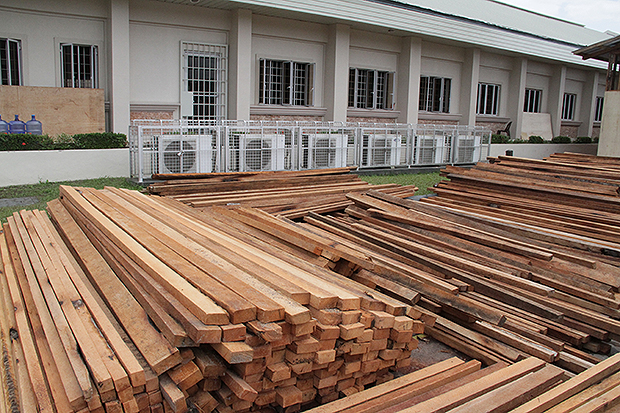
Wood piled in the parking lot of an LDS stake center in March 2014 was used to build some 3,000 new homes in areas devastated by Typhoon Haiyan. Photo courtesy of Deseret News.
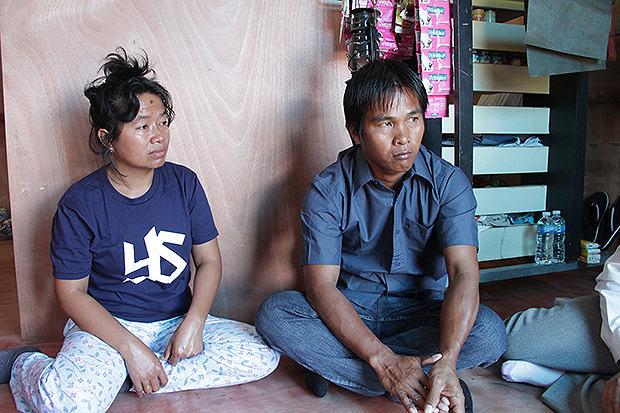
Gemmer Esperas and his wife, Analyn Esperas, sit in a new, sturdy house Gemmer constructed with help from The Church of Jesus Christ of Latter-day Saints in March 2014. The couple lost their only child, 6-year-old Annammer, during Typhoon Haiyan. Now, as part of local recovery efforts, Gemmer is receiving training in carpentry and tools from the Church. Photo courtesy of Deseret News.
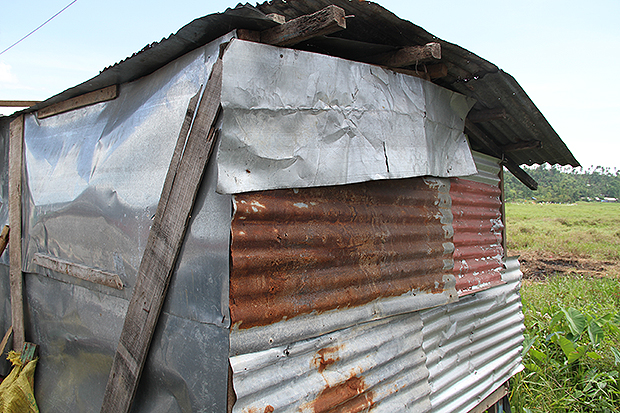
After Typhoon Haiyan hit the central Philippines on November 8, 2013, Gemmer Esperas gathered abandoned sheets of corrugated metal and built a new home. But the gaps in the metal did not provide protection from the wind or the rain. Soon he and his wife, Analyn, moved to a Church meetinghouse. Photo courtesy of Deseret News.
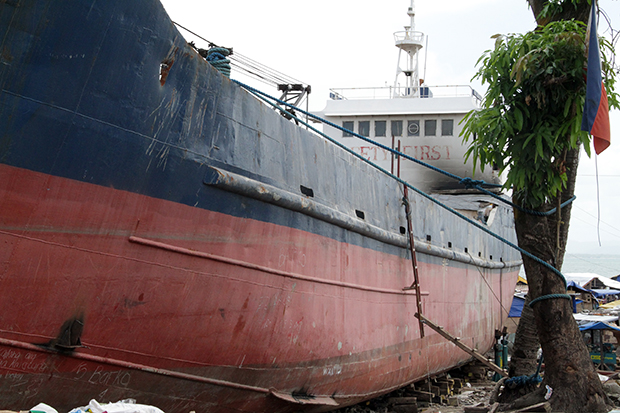
During Typhoon Haiyan, this large boat was carried inland in Tacloban, Philippines. More than 100 days later, as recovery continued in March 2014, the boat remained. Photo by Sarah Jane Weaver, Deseret News.
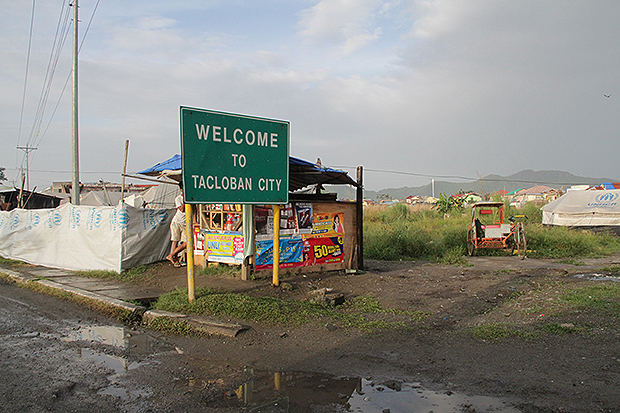
Tacloban and surrounding communities were devastated by Typhoon Haiyan, which left a path of destruction more than 100 miles wide through the central Philippines on November 8, 2013. Three months after the storm, there was still no power in the area. Photo by Sarah Jane Weaver, Deseret News.
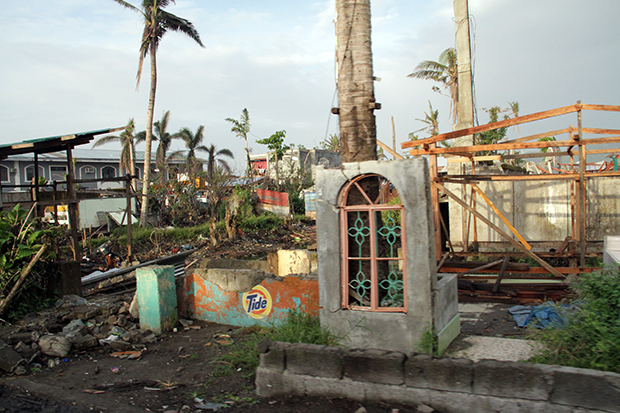
Tacloban and surrounding communities were devastated by Typhoon Haiyan, which left a path of destruction more than 100 miles wide through the central Philippines on November 8, 2013. Three months after the storm, there was still no power in the area. Photo by Sarah Jane Weaver, Deseret News.
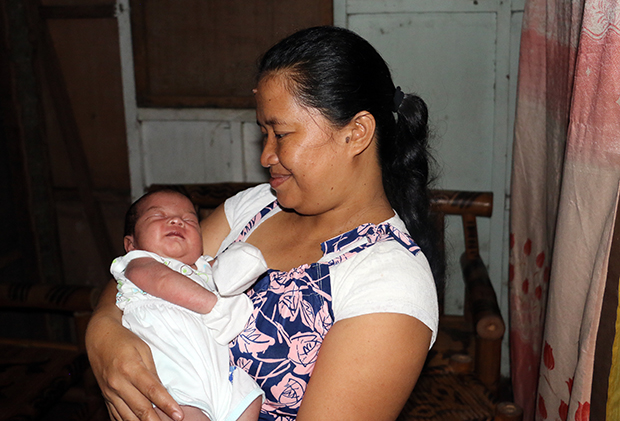
Analyn Esperas holds her infant son, Gemmer, in their home in Tacloban, Philippines, in 2017. The Esperases lost their daughter, Annammer, when Typhoon Haiyan struck the Philippines on November 8, 2013. Photo by Sarah Jane Weaver, Deseret News.
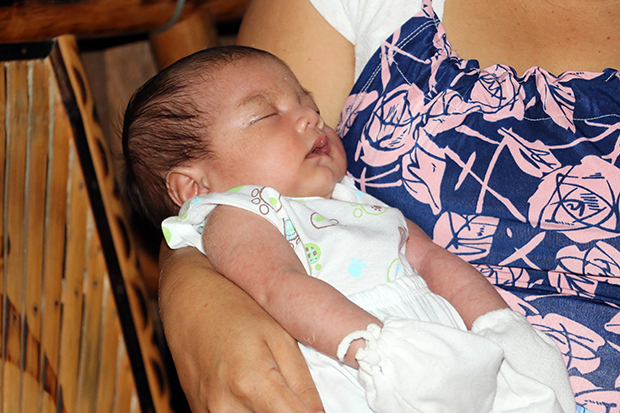
Analyn Esperas holds her infant son, Gemmer, in their home in Tacloban, Philippines, in 2017. The Esperases lost their daughter, Annammer when Typhoon Haiyan struck the Philippines on Novemer 8, 2013. Photo by Sarah Jane Weaver, Deseret News.
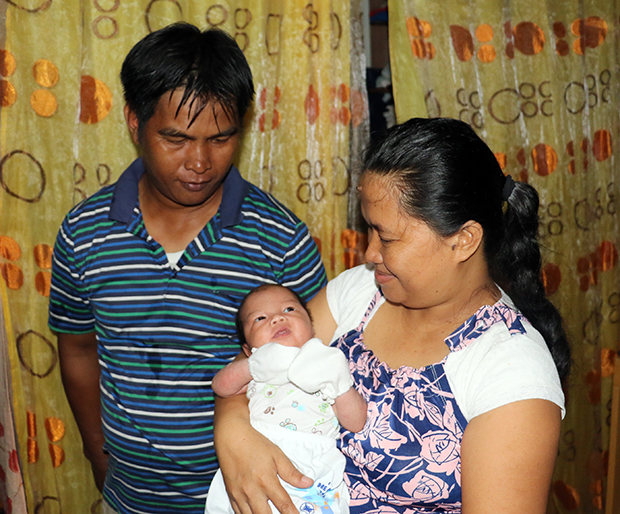
Analyn Esperas holds her infant son, Gemmer, in their home in Tacloban, Philippines, in 2017, while her husband, Gemmer, looks on. The Esperases lost their daughter, Annammer, when Typhoon Haiyan struck the Philippines on November 8, 2013. Photo by Sarah Jane Weaver, Deseret News.
